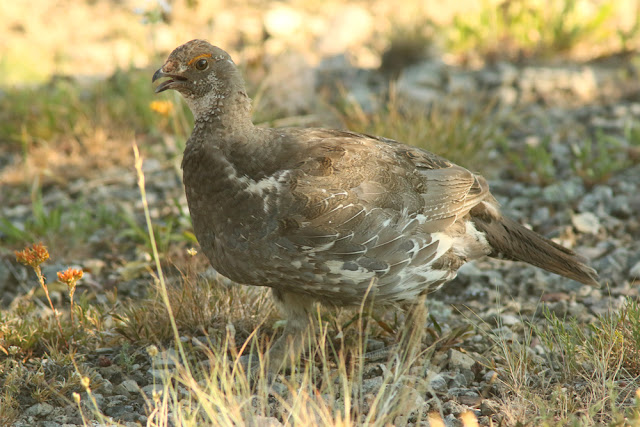Well I'm back. July was a bit of a slow period even before taking the family to Yellowstone, but I'm back now. Hopefully will even get a few local birds in but we'll see what migration brings.
I've been fortunate enough to visit Yellowstone several times over my life. The very first trip my parents took me on was to Yellowstone when I was 4 years old, well before the fires that changed the park. We went back when I was in grade school soon after the fires. Ginger and I went back about 15 years ago as the second growth thrived. But whether the spruce stands were primeval or in second growth however, elk were a constant. This time? We saw just one bull, and aside from some cows in the town next to Mammoth, just this bull. He was a nice one though.
Why didn't we see many elk? Well, one reason was the next creature, one I've never seen before outside of a zoo.
It's pretty distant admittedly. Gray Wolves have been re-introduced to Yellowstone. They're monitored pretty heavily and most if not all are radio-collared. We drove out the Lamar Valley on our first morning and pretty quickly found a line of people with scopes and pick-up trucks with long radio antennae. There were 4 wolves sheltering in the shadow of the big rock, occasionally they would stand and circle out.
A herd of buffalo went past, you can see the big herd bull walking out towards the wolves screening the herd somewhat.
The wolves stayed put and the bison ambled unconcernedly past.
Dense clusters of roadside people (and harried rangers herding the tourists) revealed the next two animals.
A (brown morph) Black Bear was resting deep in a roadside thicket. I never would have seen it, likely even if I'd walked past yards away. It would sometimes stick its head up, but for the most part we watched it just rest in the thicket. When we went past that afternoon the crowds were still there; it had been content to rest all day.
Ten miles to the south we spotted rangers walking purposefully out of trucks with scopes looking again about a mile away. This time it was a Grizzly. It was a speck in a far meadow, but as we headed back to the hotel that night it had moved to within about a quarter mile of the road.
The hump of the shoulder is visible above, the somewhat scooped in face below. Black Bears lack the hump and the snout projects more or less straight out from the forehead.
I would have been pretty happy to see one bear over the course of the week and wasn't at all sure we'd find a wolf; we'd found all three the first day!
























































